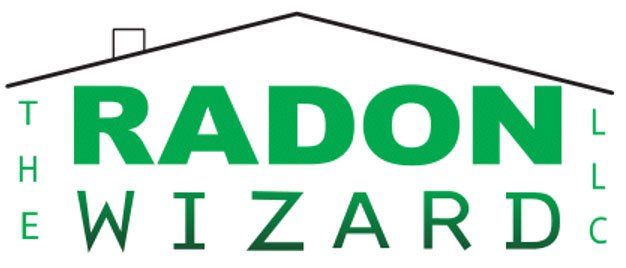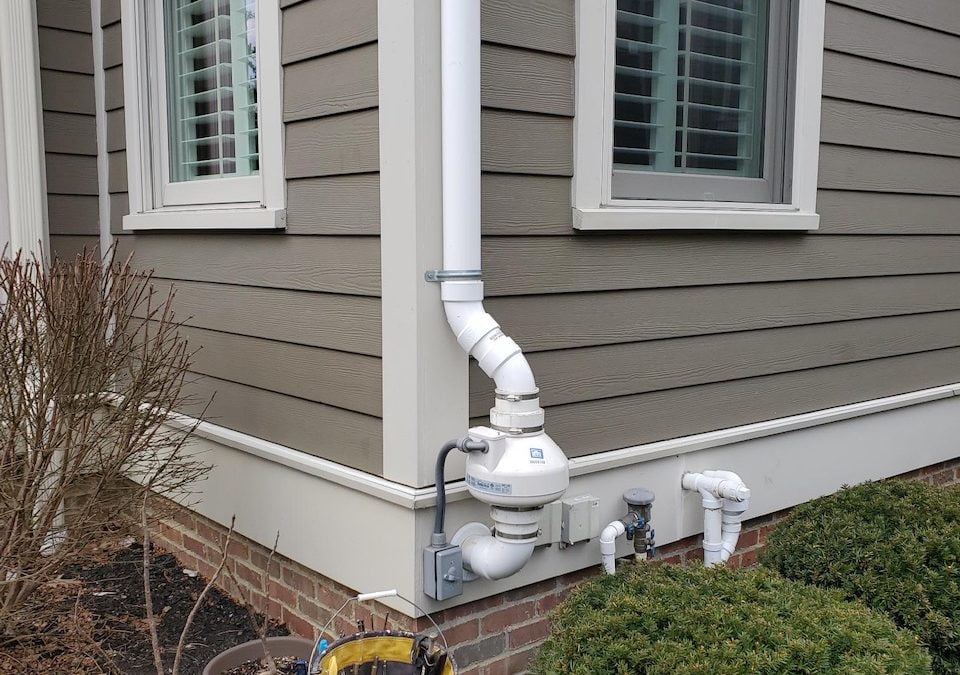Radon is a naturally-occurring, colorless, odorless, and tasteless gas produced by the breakdown of uranium in the soil. It poses a serious health hazard when it accumulates inside a home or business, because it can cause lung cancer. To protect yourself from this danger, many have installed a radon mitigation system. But what is the best type of radon mitigation system?
The answer to this question depends on your situation.
If you are constructing a property, you can have a Passive Radon Mitigation System installed. Passive systems rely on natural convection to help reduce indoor levels by a stack effect. This type of system is routed interiorly through the property and exhausts through the roof just like a plumbing stack. This system does not guarantee that the property will not have an elevated level of radon in the future, but does allow a way for this dangerous gas pressure to be released elsewhere rather than directly in to the structure. The cost of this addition to a new build can be very minimal, but may have additional costs that must be spent if the radon concentrations are found to be elevated after the build is completed. A radon test should always be conducted once the structure is completed to verify the current radon concentrations. One of the most important things about this type of system is the design and execution of the installation of the system.
Once the structure is completed, the most common method is called an Active Soil Depressurization System (ASD). These are the go-to systems once the structure is built as you are now limited to treating what is there. These systems are installed by sealing those areas where radon may be gaining entry in to the home, installing piping to vent these areas, and then the addition of a fan motor to draw an active vacuum. It should be noted that a properly designed and installed Passive Mitigation System can become an ASD System with the addition of a fan motor. These types of systems have the best results because you are taking the bulk of the radon that would otherwise be coming into your general breathing zone, diverting it through the system, and exhausting it at a designated safe area where it would not gain re-entry in to the home.
There are some instances where an ASD is not able to be installed effectively. Whether it be due to the age of the home, inaccessible areas where radon is penetrating in to the home, or even requirements from a governing authority, sometimes you may need to look at an Energy Recovery Ventilator (ERV). This type of system functions in a way that it dilutes the radon concentration within a structure. It typically ties in to the HVAC of the property. This allows it to grab air from the cold-air return that would have the radon gas from the structure and move it to the exterior. At the same time, it brings more fresh air from the outside to replace the air that it removed from the cold-air return. Although these systems can be effective, it becomes a situation of how much air needs to be “exchanged” to dilute the radon gas coming into the property. These systems can be very cost prohibitive and typically do not yield results as effective as the ASD systems.
The next system is designed for those parts of the country where your interior radon concentrations are dramatically increased by your water supply. This is caused from a well water source. It is important to note, that in Ohio, this is not typically a problem. As such, the quick method here is a system that is installed on the water supply that allows the water to aerate before it comes into your home. This allows for radon gas to be expelled from the water supply making it much less of a concern.
There are other methods that are out there in regards to radon mitigation. The ones listed above are simply the most popular methods being utilized.
When selecting a radon mitigation system for your home or business, it’s important to have your property tested beforehand so you can determine what your starting radon concentration is. This will allow you the knowledge to know how dramatic of a difference your mitigation efforts are providing.
Choosing the best possible radon mitigation system for your home or business requires careful consideration based on a variety of factors. Once you’ve determined which type of system would be most suitable for your building, you should contact a reputable installation company who specializes in these services in order to ensure that everything gets installed correctly. Professional installation companies, such as The Radon Wizard, will have the expertise needed to install the system correctly and safely, ensuring that it functions properly over time. Having an expert inspect and install whatever system you select will give you peace of mind knowing that everything has been done correctly and safely.

